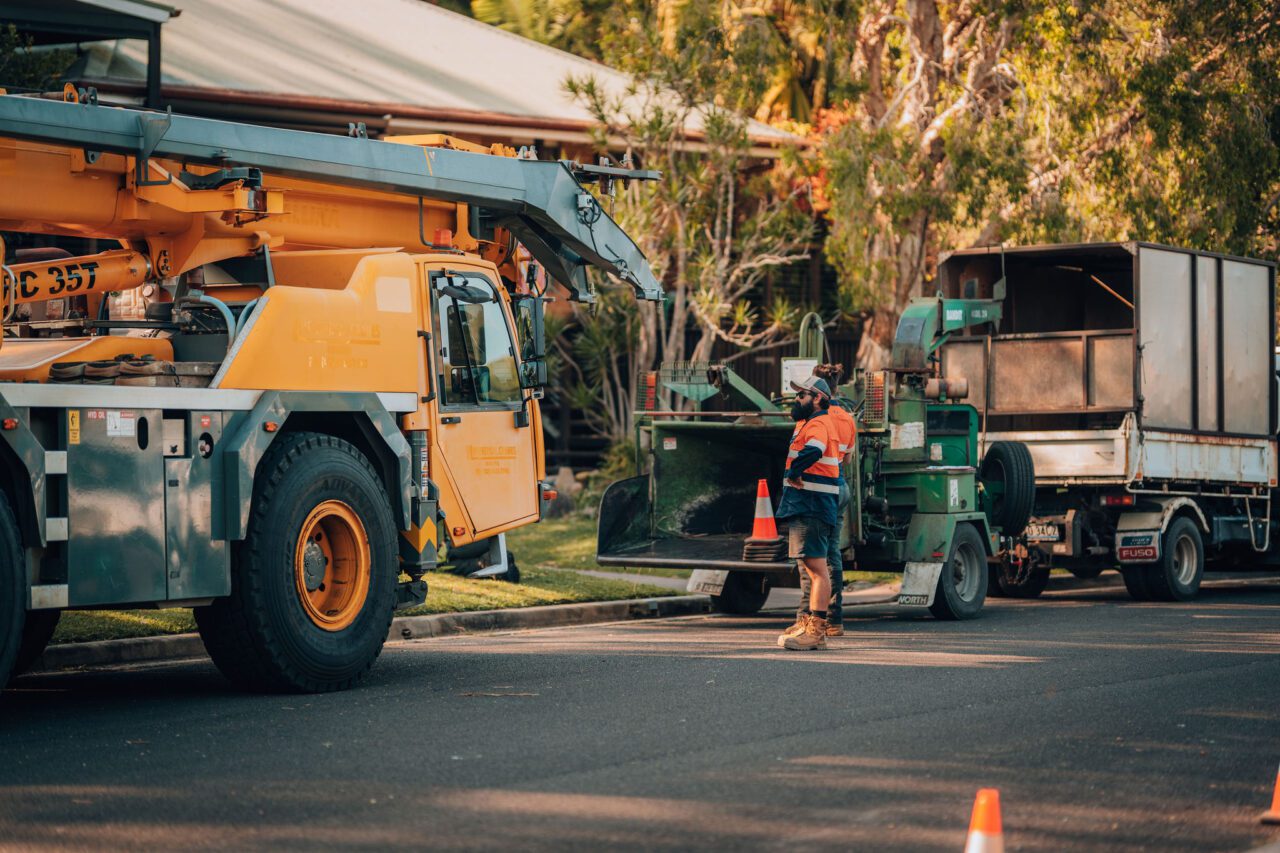Emergency Tree Removal
Natural disasters can strike at any moment, and trees—while beautiful and beneficial—can become dangerous hazards in seconds. Whether it’s due to high winds, storms, or disease, when a tree threatens property or personal safety, you need emergency tree removal fast and without confusion.
The process is not just about cutting down trees—it’s about restoring safety, preventing further damage, and sometimes dealing with complex insurance paperwork. This guide walks you through everything you need to know about emergency tree removal, including when to call professionals, how insurance tree removal works, cost expectations, and how to protect your property in the future.
What is Emergency Tree Removal?
Not every fallen tree is an emergency. But when a tree blocks a road, crashes onto a roof, or tangles with utility lines, immediate removal becomes non-negotiable.
It typically involves:
- Immediate assessment of the hazard
- Safe and controlled removal
- Coordination with emergency responders or utility companies (if needed)
- Cleanup and debris removal
Why Emergency Tree Removal is Critical
Tree emergencies aren’t just inconvenient—they’re often dangerous. Dead or damaged trees can collapse with little warning, posing serious risks to:
- Residential homes
- Businesses and vehicles
- Power lines
- Pedestrians and pets
Delaying removal in these scenarios increases the potential for property damage, injury, and even legal liability. Rapid response is not just smart—it’s essential.
Signs You Need Emergency Tree Removal
Don’t wait for disaster to strike. Be proactive by recognizing these urgent warning signs:
- Leaning Trees: Especially if the lean is recent or increasing.
- Exposed Roots: Often due to soil erosion or flooding.
- Cracks in the Trunk: Deep splits can indicate internal decay.
- Hanging Branches: Especially large limbs caught in power lines or roofs.
- Sudden Bark Loss: A sign of disease or infestation.
- Trees Near Power Lines: Any contact with wires is an emergency.
Emergency Tree Removal vs. Regular Tree Services
Regular tree services focus on aesthetics, health maintenance, and planned removals. Emergency tree removal, however, is reactionary—triggered by safety threats. Key differences include:
| Feature | Regular Tree Service | Emergency Tree Removal |
| Scheduling | Planned | Immediate |
| Risk Factor | Low | High |
| Cost | Predictable | Higher (due to urgency) |
| Equipment | Standard | Specialized |
Common Causes of Emergency Tree Situations
Emergency tree problems don’t arise randomly. The most common causes include:
- Severe Storms: High winds, heavy rain, lightning.
- Snow and Ice Accumulation: Weaken branches and trunks.
- Root Rot or Disease: Trees become structurally unsound.
- Soil Erosion: Weakens the tree’s foundation.
- Improper Pruning: Makes trees unstable over time.
Storm Damage and Fallen Trees
Storms are the leading cause of emergency tree removal. Wind and water pressure weaken trees—sometimes causing immediate collapse, other times creating future hazards.
After a storm:
- Survey your property for fallen limbs or leaning trees.
- Check roofs, fences, and power lines.
- Call professionals before attempting any removal yourself.
How Weather Impacts Tree Stability
Weather plays a massive role in tree integrity:
- Heavy Rain can loosen soil, exposing roots.
- Wind Gusts place mechanical stress on limbs.
- Lightning can cause instant splitting.
- Snow/Ice add weight and stress on branches.
Consistent weather monitoring and proactive tree inspections are key to prevention.
Emergency Tree Removal for Residential Properties
When disaster strikes at home, emergency tree removal becomes an urgent task. Common situations include:
- Trees crashing into roofs
- Large limbs blocking driveways or entryways
- Branches threatening window structures
- Power line interference
Emergency Tree Removal for Commercial Properties
Business properties aren’t immune. In fact, a downed tree can:
- Halt operations
- Create safety liabilities for customers
- Lead to lawsuits in case of injury
For commercial properties, the stakes are higher—emergency removal must be swift and compliant with safety laws.
Tree Removal After a Storm: Step-by-Step Guide
After a severe storm, follow this guide for immediate action:
- Ensure Safety First: Keep everyone away from the damaged area.
- Call Emergency Services if Needed: Especially if power lines are involved.
- Document the Damage: Take clear photos for insurance claims.
- Contact Tree Removal Experts: Choose certified professionals with emergency response services.
- Coordinate with Insurance Provider: Begin the claims process if damage occurred.
- Remove Debris Safely: Let pros handle it if large limbs or trunks are involved.
Safety First: What to Do Before the Professionals Arrive
Before your emergency tree removal team arrives:
- Mark off dangerous areas with cones or tape
- Keep pets and children indoors
- Avoid touching or moving limbs yourself
- Stay clear of power lines and report them immediately
- Do not attempt chainsaw work without training
Tools Used in Emergency Tree Removal
Professionals don’t just bring a chainsaw. Here’s what they use:
- Cranes & Bucket Trucks: For high or unstable trees
- Chainsaws & Pole Saws: To trim and remove sections
- Safety Harnesses & Ropes: For climbing and lowering limbs safely
- Chippers & Mulchers: For debris cleanup
- Protective Gear: Helmets, gloves, goggles
Emergency Tree Removal Techniques Used by Pros
Depending on the situation, arborists may use:
- Sectional Felling: Tree is dismantled piece-by-piece from the top down
- Crane-Assisted Removal: For trees too dangerous to climb
- Directional Felling: Used when space allows for whole tree removal
- Roping Systems: To lower heavy limbs carefully
Each method prioritizes control, safety, and minimizing further property damage.
Contact Caters Tree Care – Emergency Tree Removal Company
- 24/7 emergency response availability
- Certified arborists on staff (ISA certified)
- Proper insurance and licensing
- Positive local reviews and recommendations
- Transparent estimates with clear scope of work
Average Cost of Emergency Tree Removal
Emergency tree removal often costs more than standard services due to urgency, equipment, and risk.
Typical Costs Range From:
-
$500 – $2,500 depending on:
- Tree height
- Location and accessibility
- Urgency (weekend or night removals cost more)
- Whether a crane or special equipment is needed
Factors That Influence Tree Removal Costs
| Factor | Impact on Cost |
| Tree size | Larger = Higher cost |
| Proximity to structures | Increases complexity |
| Time of day | Nights/weekends = Extra fees |
| Equipment required | Crane use = Premium pricing |
| Cleanup included | Additional service = Extra charge |
Emergency Tree Removal and Homeowner’s Insurance
This is where insurance tree removal comes in. Most homeowner policies do cover tree removal if:
- The tree damages a covered structure (home, garage, fence)
- The cause is a covered peril (wind, lightning, storm)




How to File a Claim for Insurance Tree Removal
To maximize your insurance payout:
- Take Photos Immediately
- Call Your Insurer
- Hire a Certified Arborist
- Keep All Receipts
- Follow Up on Your Claim
In many cases, insurance may also cover temporary roof tarping or property boarding.
When Insurance Won’t Cover Tree Removal
Insurance will not cover removal if:
- The tree didn’t damage a covered structure
- The tree fell due to neglect or rot
- The fallen tree was on a neighbor’s property (unless it caused damage to your insured structures)
- It’s considered an “act of God” and isn’t listed in your coverage
Getting Reimbursed for Emergency Tree Services
You can potentially get reimbursed for:
- Tree removal costs
- Debris cleanup
- Damage repair
Most insurers have an unlimited cap as long as pricing can be substantiated. Always check your policy.
DIY Tree Removal: Why It’s Not Recommended
DIY attempts can be deadly or legally risky. Issues include:
- Personal injury
- Damage to nearby property
- Potential lawsuits
- Violation of city codes or HOA rules
Professional emergency tree removal is safer, faster, and often required for insurance purposes.
Tree Damage Prevention Tips
Reduce your risk with these steps:
- Schedule annual tree inspections
- Trim dead limbs
- Remove diseased or leaning trees
- Avoid planting large trees near structures
- Use cabling or bracing for weak limbs
Tree Stump Removal After Emergency Services
Don’t leave a hazard behind. Stump options include:
- Grinding: Most popular
- Digging Out
- Chemical Treatment
- Natural Decomposition (slow)
Conclusion: Preparing for the Unexpected
Nature is unpredictable—but you don’t have to be unprepared. Keep emergency contacts handy, inspect your trees regularly, and know your insurance details. Being proactive and informed about emergency tree removal and insurance tree removal can save lives, property, and money.
FAQs About Emergency Tree Removal
Does homeowners insurance cover emergency tree removal?
Yes, if the tree damages a covered structure and falls due to a covered peril like a storm or lightning.
Can I remove a tree myself in an emergency?
Not recommended. It’s risky, and may void insurance claims if done improperly.
How fast can emergency tree services arrive?
Most reputable companies offer 24/7 response—arrival time varies by location and weather.
Will my insurance cover the entire removal cost?
Yes they will cover the entire removal cost.
Do I need a permit for emergency removal?
Sometimes. Local laws vary—always check with your city or local council.
Can insurance pay for stump grinding too?
It depends on the policy, but many do not include stump grinding in emergency coverage.

